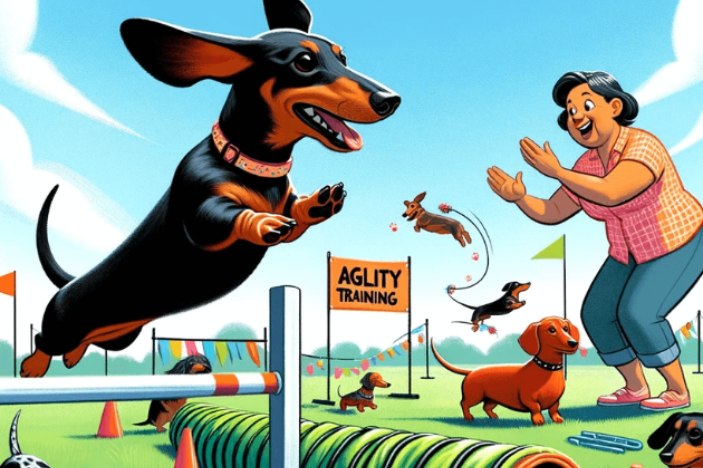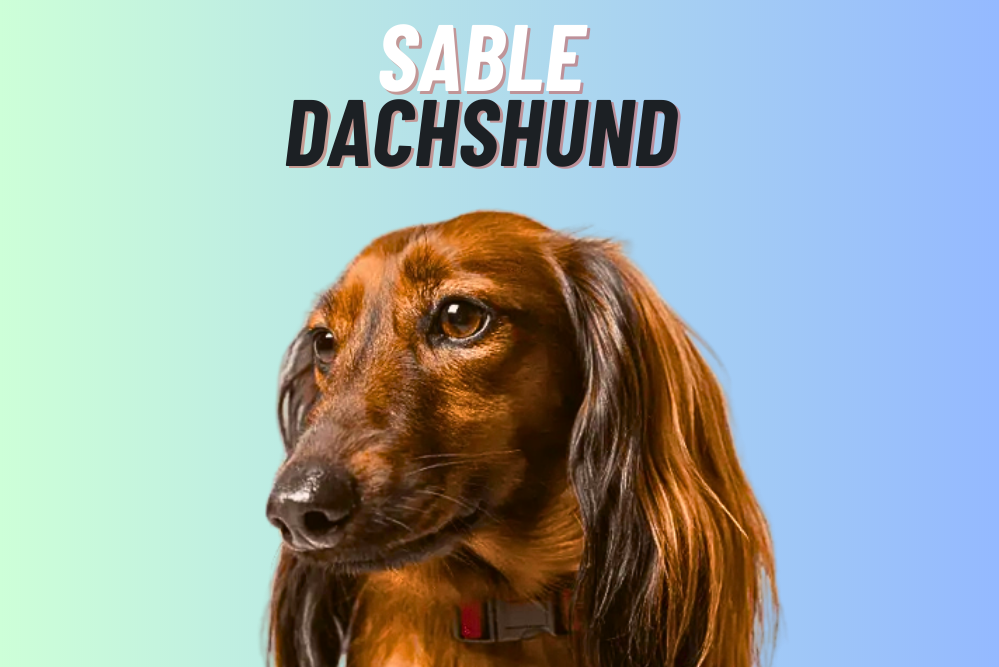Introduction
Dachshunds can make great companions for multi-dog households, but early socialization and training are key to ensuring they get along well with other canines. do you want to know? Are Dachshunds Good With Other Dogs? Dachshunds are lively and playful by nature, so they typically enjoy interacting and playing with other dogs. However, their hunting instincts mean they may have a tendency to chase small animals. Their petite size also means dachshunds could be injured if playing with much larger, energetic breeds.
To promote harmony with other pets, experts recommend socializing dachshunds early and often. Introduce them to a wide variety of people, dogs, and environments starting at a young age. Continue socialization throughout their lives by arranging play dates with neighbor dogs or attending training classes. This helps prevent fearfulness and aggression toward unfamiliar canines.
Proper obedience training is also essential for dachshunds, like any breed. This establishes you as the pack leader and teaches them to listen to commands, even when distracted by other dogs. Always supervise interactions between dachshunds and larger breeds to prevent injuries.
With training, socialization, and supervision, dachshunds can thrive in homes with other pets. Their outgoing personality helps them make friends easily. Monitor play to ensure it stays positive and intercepts any signs of aggression immediately. Overall, dachshunds have the potential to live harmoniously with other dogs when given the proper care.
Train your dachshund to live with other dogs
If you want to train your dachshund to live with other dogs, it’s important to start socializing with them from a young age.

Here are some steps you can take:
- Expose your dachshund to other dogs: Take your dachshund to places where it can interact with other dogs, such as dog parks or group obedience classes. Start with well-behaved dogs and gradually introduce your dachshund to more challenging situations.
- Use positive reinforcement: Reward your dachshund for good behavior around other dogs. Use treats or verbal praise to reinforce appropriate behavior, such as playing nicely with other dogs or not reacting aggressively.
- Teach basic obedience: Teach your dachshund basic obedience commands such as “sit,” “stay,” and “come.” This will help you control your dachshund in situations where they may become excited or agitated around other dogs.
- Supervise interactions: Always supervise your dachshund when they are interacting with other dogs. This will allow you to intervene if necessary and ensure that both dogs are safe.
- Be patient: Training your dachshund to live with other dogs may take time, especially if they have not been socialized before. Be patient and consistent with your training, and don’t hesitate to seek the help of a professional dog trainer if needed.
Remember, every dog is different and some dachshunds may never be completely comfortable around other dogs. It’s important to respect your dachshund’s personality and preferences, and always prioritize their safety and well-being
Train them to share food and place
Teaching individuals to share food and space can be a complex multi-faceted task that involves various social, cultural, and psychological factors. However, here are some general tips and strategies that can help encourage individuals to share food and space more effectively but it is a crucial skill for living in a community.
Here are some tips for encouraging sharing and cooperation:
Start with positive reinforcement: Praising individuals when they share or collaborate can reinforce the behavior and encourage others to do the same.
Establish clear expectations: Make sure everyone understands that sharing food and space is an important part of living in a community and that it is expected of everyone. This can be done through conversations or written rules.
Lead by example: Model the behavior you want to see in others. Share your own food and space willingly and generously, and others may follow suit.
Encourage communication: Encourage individuals to communicate their needs and preferences respectfully and to find ways to compromise when conflicts arise.
Practice empathy: Encourage individuals to put themselves in others’ shoes and to consider their feelings and needs when making decisions about sharing food and space.
Provide opportunities for sharing: Organize events or activities where individuals are encouraged to share food or space, such as potlucks or group projects.
Be patient: Remember that learning to share is a process, and it may take time for individuals to develop the habit. Encourage persistence and celebrate small successes along the way.
Overall, teaching individuals to share food and space effectively requires patience, empathy, and a willingness to listen and adapt to the needs of the group.
By fostering a sense of community, establishing clear rules, and encouraging communication, you can help create a culture of sharing that benefits everyone involved
Train Your Dachshund to Be a Multi-Environment Dog
Training your dachshund to be a multi-environment dog can be a fun and rewarding experience for both you and your furry friend. Dachshunds are known for their stubbornness, so patience and consistency are key in this process.
Here are some tips for training your dachshund to be a multi-environment dog:
- Start with basic obedience training: Before you can train your dachshund to be a multi-environment dog, it’s important to establish basic obedience skills like sit, stay, come, and leash walking. These skills will be the foundation for more advanced training.
- Socialize your dachshund: Expose your dachshund to a variety of environments and people. This will help them become more confident and comfortable in different situations. Take your dachshund to the park, on walks in busy areas, and to dog-friendly stores.
- Train in different environments: Once your dachshund has mastered basic obedience skills, start training in different environments. For example, practice recall in the park, or practice stay and down commands at a busy outdoor cafe.
- Use positive reinforcement: Reward your dachshund with treats, praise, and playtime for good behavior. This will encourage them to repeat the desired behavior in different environments.
- Be patient: Training a dachshund to be a multi-environment dog can take time, so be patient and consistent in your training. Don’t get frustrated if your dachshund doesn’t immediately respond to commands in a new environment.
- Gradually increase difficulty: Once your dachshund is comfortable in one environment, gradually increase the difficulty of the training. For example, if your dachshund is comfortable with recalling in a quiet park, try practicing in a busy park or on a hiking trail.
- Make it fun: Training your dachshund to be a multi-environment dog should be a fun and enjoyable experience for both you and your dog. Incorporate games and play into your training sessions to keep your dachshund engaged and excited to learn.
Remember, training your dachshund to be a multi-environment dog is a process that requires patience, consistency, and positive reinforcement. With time and effort, your dachshund can become a confident and well-behaved companion in any environment
When is the right time to get a second dog?
Deciding to get a second dog can be an exciting prospect, but it’s important to consider a few key factors before making the commitment.
One crucial aspect to consider is whether or not you are ready for the additional responsibility that comes with caring for another animal.
Adding a second dog to your household can mean more time, effort, and resources devoted to training, feeding, exercising, and providing medical care for your pets.
Another important consideration is your current living situation. If you live in a small apartment or have limited outdoor space, adding a second dog may not be the best idea.
On the other hand, if you have a large home and yard, a second dog may thrive in the extra space and stimulation.
You should also take into account the temperament and personality of your current dog. If your dog is friendly and sociable with other animals, it may be more open to the idea of sharing its home with another dog. However, if your dog is aggressive or territorial, introducing a second dog could be a challenge.
It’s also important to consider your lifestyle and schedule. If you work long hours or travel frequently, adding a second dog may not be practical. Dogs require attention, socialization, and exercise, and adding a second dog to the mix means more time and energy devoted to meeting these needs.
Ultimately, the decision to get a second dog should be based on careful consideration of your personal circumstances and your ability to provide for the needs of both dogs.
If you are confident that you can handle the additional responsibility and provide a happy and healthy home for both dogs, then it may be the right time to welcome a new furry friend into your family.
Conclusion
Dachshunds can generally get along well with other dogs if properly socialized from a young age. Their lively and playful nature makes them prone to wanting to interact and play with other dogs. However, dachshunds were bred to hunt badgers and other animals, so they may exhibit some chasing behaviors towards small animals. Their small size also means they can be at risk of injury from larger, rougher dogs. With early and ongoing socialization, dachshunds can learn to coexist peacefully with most other canines. Owners should be alert to any signs of aggression or fear and be ready to intervene if needed. Overall, dachshunds have the capacity to be friendly, outgoing members of a multi-dog household if given the proper training and introduction to other pets.
Additionally, it’s important to remember that every dog is unique and may have different preferences and tendencies when it comes to socializing with other dogs. Overall, with the right approach and careful attention to their needs, Dachshunds can be a great addition to a multi-dog household.




